Once the four hour boil of the wort and aged hops is finished, the next step of the brewing process can begin. First, the wort is pumped from the boiling kettles into the hopback, a deep stainless steel vessel used as a filter to capture the hop flowers. This process continues even after the coolship has begun filling, until all the wort has been run through the hopback. The hot wort is pumped into Cantillon’s copper coolship (koelschip), which is located on the top floor (attic) of the brewery.
The coolship, a shallow, rectangular vessel, occupies its own room on the same floor as the malts and hops, at the very top of the brewery. Van Roy says: “Our coolship has a capacity of 70 hectoliters (note: about 59.6 U.S. barrels.) The other 5 hl of wort from each batch is filled into another tun, called a cuve guilloire.”
Open windows in the coolship room allow the cold night air to flow in, and with it, wild yeasts and bacteria that exist naturally in the air. As the wort cools overnight, from a starting temperature of about 85 to 90 degrees Celsius (185 to 194 degrees Fahrenheit) wild yeasts, which include Brettanomyces Bruxellensis and Brettanomyces Lambicus, and various bacteria, fall into the wort to feast (feed) on the starches and proteins inside. The coolship’s design provides a large surface area for the wort to be exposed to the air, and allows for maximum exposure for the wild yeasts and bacteria to be able to fall into the wort. These wild bugs begin to infect (ferment) the wort, as it cools overnight to about 18 degrees celsius (64 degrees Fahrenheit.) The next morning, the cooled wort will be pumped into some of Cantillon’s oak and chestnut casks, which range in size from 225-liters to 2000-liters (1.9 to 17 U.S. barrels.)














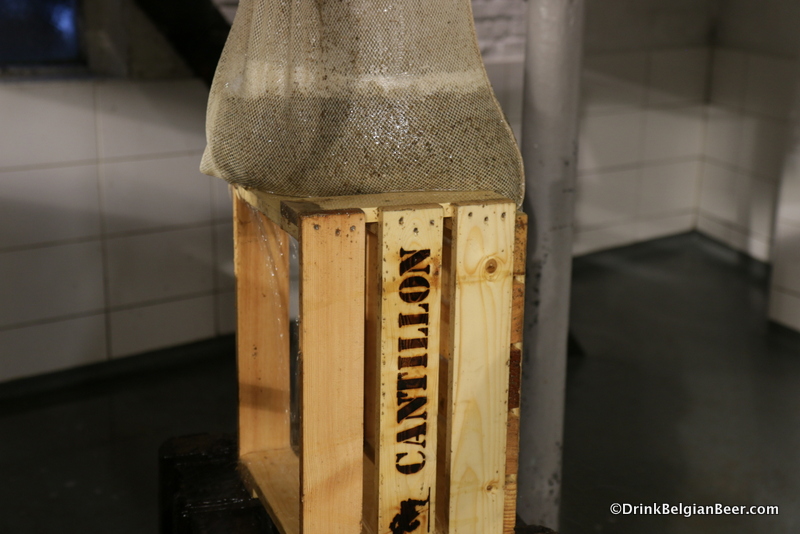
And now, where the magic happens…..Cantillon’s coolship! Note the open (louvered) windows to the left and right in some of the photos. On a typical brew day, the coolship begins to be filled around 3:15 to 3:30 pm, and it takes about an hour and a half to fill completely.




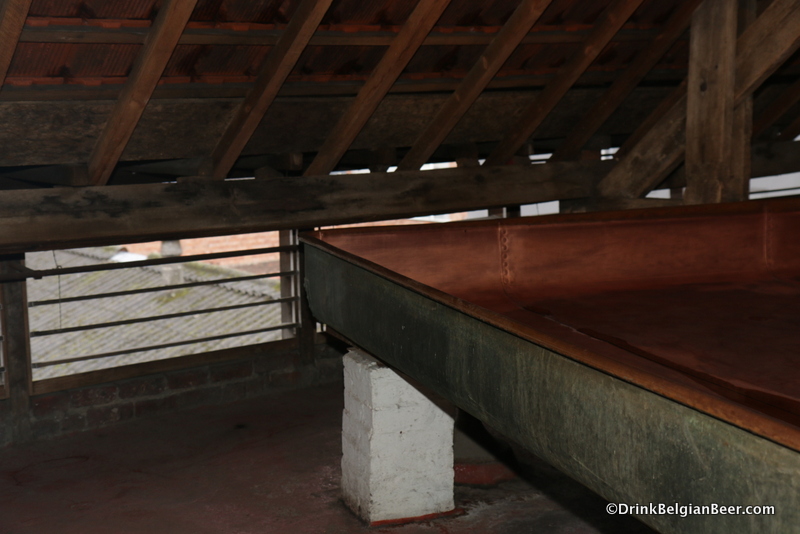



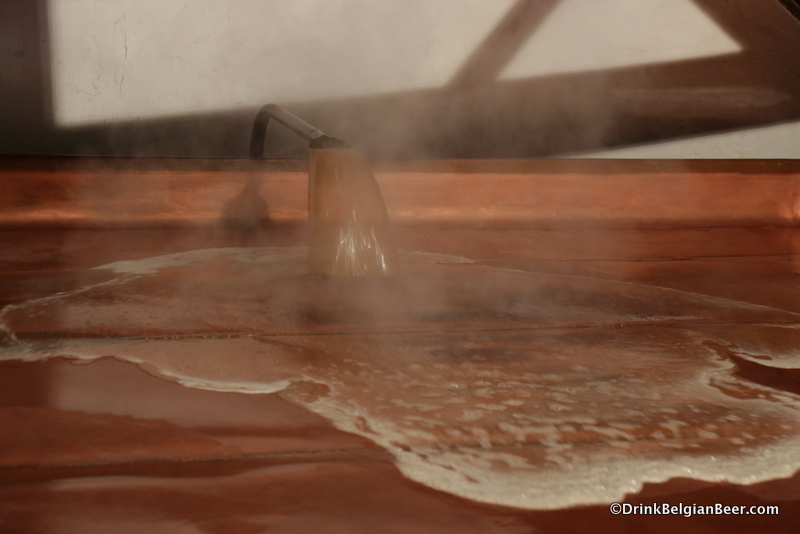
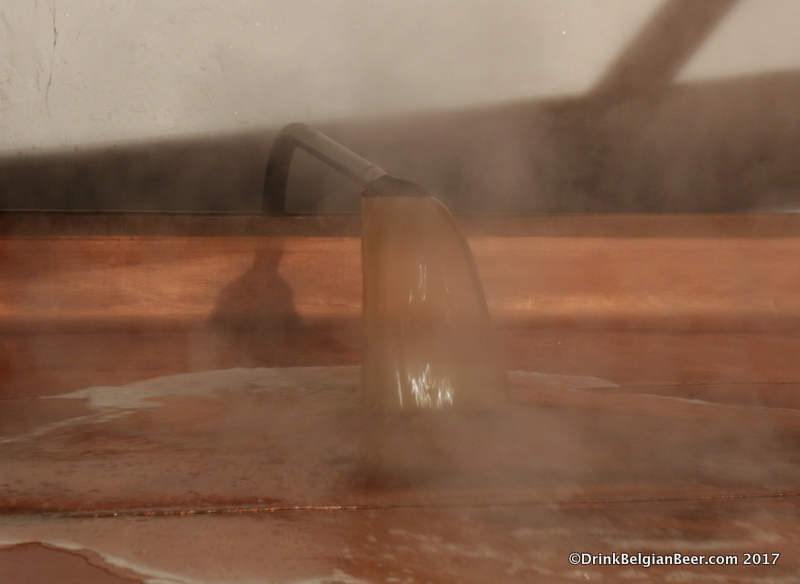


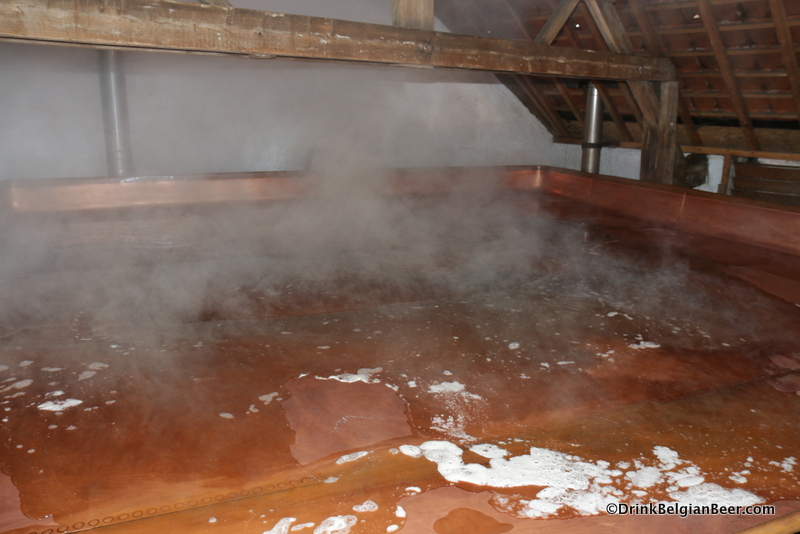








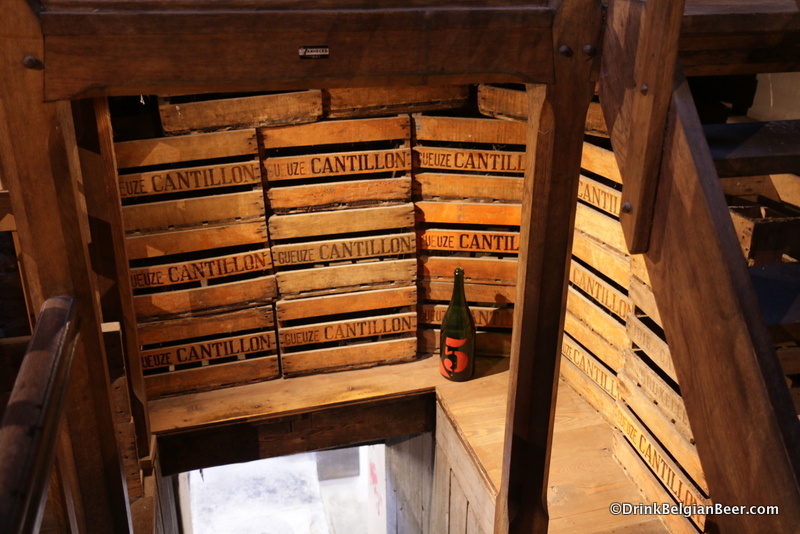

Once the wort has cooled for at least 12 hours or so, it will be pumped into some of Cantillon’s wooden casks, which are made of oak and chestnut. The wort will age in casks for between one and four years, depending on which beer the lambic is to be used in. The process of fermentation and aging in wooden barrels transforms the wort into lambic. The details of that process will have to wait for another story….
Cantillon brew days most often happen on Tuesdays and Thursdays, and some Wednesdays. Jean Van Roy says: “We have to prepare for brewing the day before we brew, and that is why we do not brew on Mondays, because we are closed on Sundays. Also, we have to finish cleaning the brewery and fill barrels with the cooled wort the day after a brew day, and that is the reason that we do not brew on Fridays, because we do not want to do that work on Saturdays.”
A typical brew day lasts until about 4:30 pm. The brewery opens to the public at 10 am and closes at 5 pm. Last call in the popular tasting room is 4 pm. Brasserie Cantillon is closed on Wednesdays, Sundays, and public holidays.
Here are two more articles on Brasserie Cantillon:The Bomb Shelter Beer Cellar and Filling Barrels on Brew Day.

For information on tourism in Brussels.
If you like this website, please like our Facebook page
And our Instagram page here.
And our Twitter page

Leave a Reply